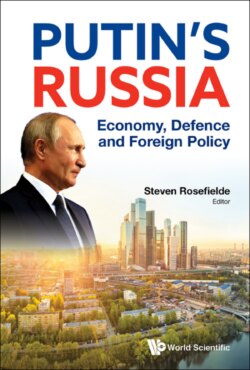Читать книгу Putin's Russia - Группа авторов - Страница 35
На сайте Литреса книга снята с продажи.
Conclusion
ОглавлениеThe distinguishing features of Putin’s regime are its energy strategy, administrative discipline and government domination. Even though, the regime has emphasised on “modernization”, Russian development is lagging. The economy remains energy dependent and state over-regulation is making it vulnerable to external shocks. The economic crisis, sanctions/ counter-sanctions and global industrial competition have forced Russia to modify its growth strategy. Innovation has become the new cornerstone of Russian economic growth.
The NIS in all countries is path dependent. Russia’s state-led innovation policy is aimed for the long term. The state-led National Technology and Digital Economy Initiatives of 2014 marked a turning point in the intensification of state-led development. State corporations and government became the main engines for innovation, with the government introducing fresh initiatives like cluster formations, incubators, academic reforms and state industrial policies.
The results have been mixed. On the one hand, R&D expenditure increased, and some innovation models succeeded. Innovation increased, and the research organisations grew. On the other hand, the share of GDP devoted to innovation has been static, and state control has increased. Even though technology innovation slightly improved, organisational/ marketing/ecological innovation remains immature.
Enterprises’ adaptation has been uneven. Information and communication technologies diffused broadly into Russian business/society, but attitudes towards digitalisation have been negative, and the impact of digitalisation on modernisation has been weak. Russia will not be able to keep pace with its competitors economically and militarily unless it does a better job of facilitating innovation.
